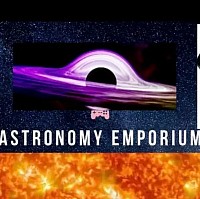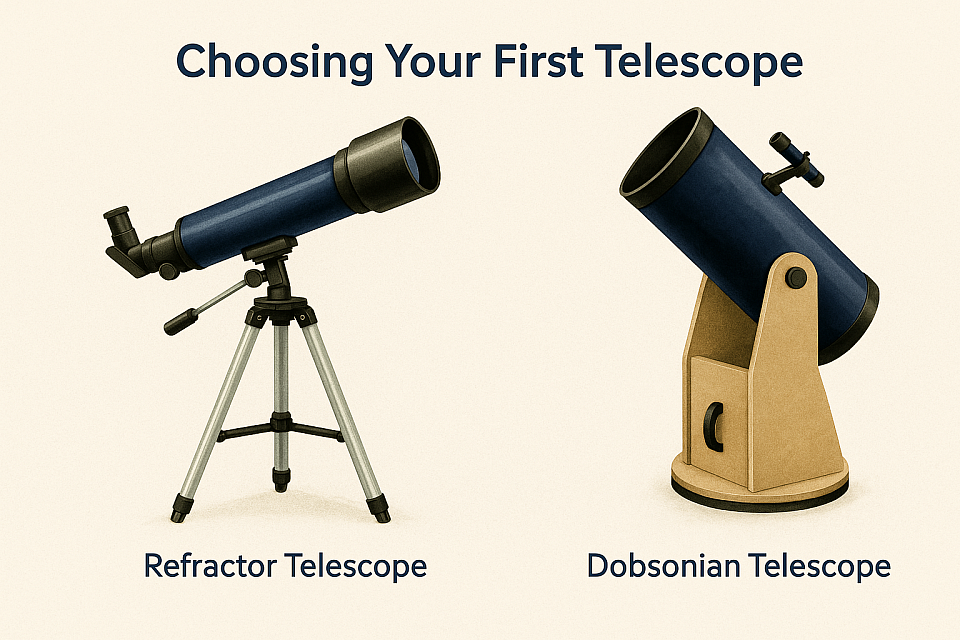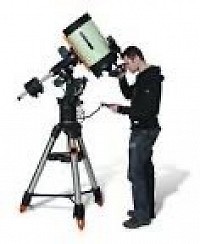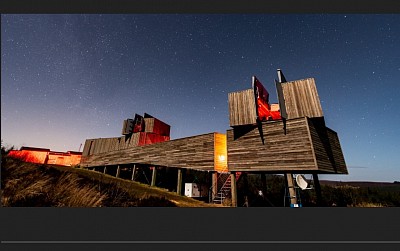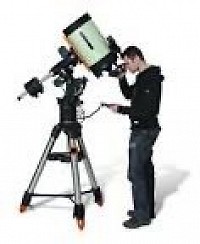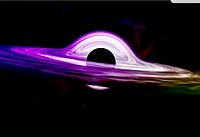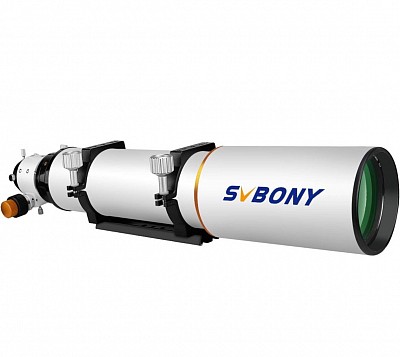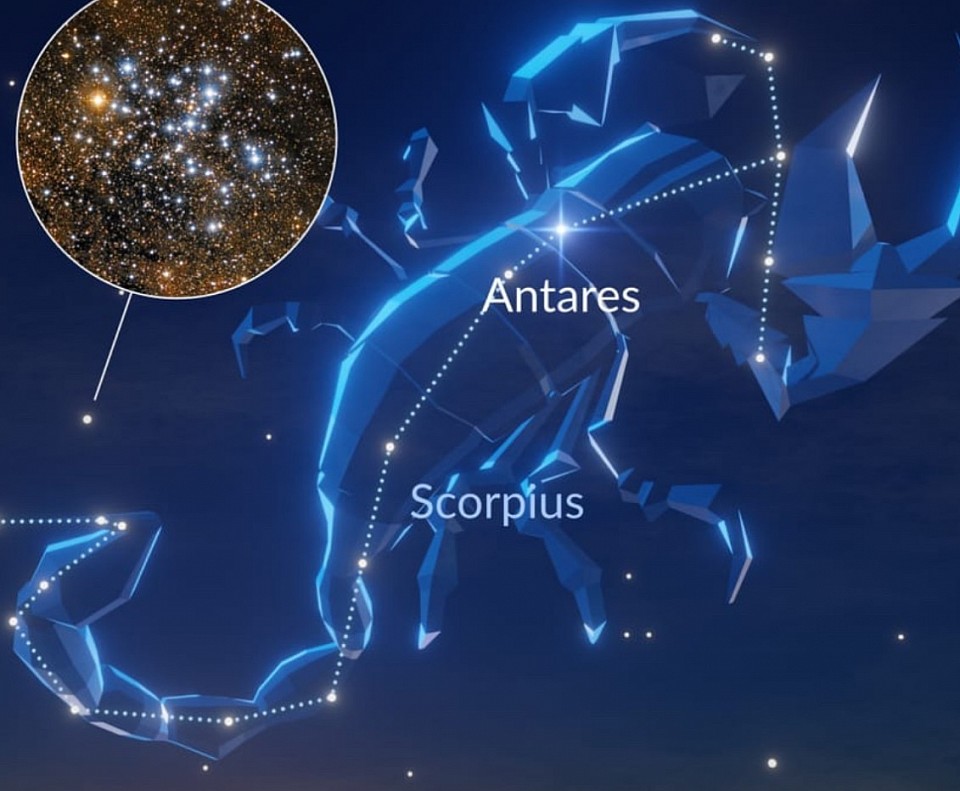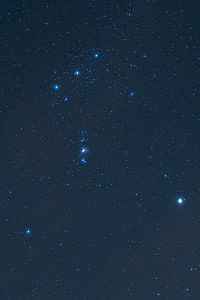Shop Telescopes for All Levels – Beginner to Expert Picks (UK, 2025)
Best Beginner Telescopes UK 2025: Top Picks Under £300
Looking for the best telescope to start your astronomy journey — without spending a fortune?
In this guide, we’ve rounded up the top beginner-friendly telescopes available in the UK under £300, updated for 2025. These scopes offer excellent views of the Moon, planets, and even some deep sky objects — perfect for stargazers who are just getting started.
🔭 Top 5 Beginner Telescopes Under £300
1. Celestron AstroMaster 70AZ
Type: Refractor
Price: ~£160
Best for: Easy viewing of the Moon and planets
Why it’s great: Lightweight, fast to set up, good optical quality
Downside: Narrower field of view compared to reflectors
2. Sky-Watcher Heritage 100P
Type: Tabletop Reflector
Price: ~£120
Best for: Kids or casual observers
Why it’s great: Very portable, surprisingly powerful for the price Downside: Needs a steady table to use effectively.
3. Celestron StarSense Explorer LT 80AZ
Type:-Refractor with smartphone tracking
Price: ~£280
Best for: Tech-savvy beginners
Why it’s great:- Uses your smartphone to find objects in the sky
Downside: On the higher end of the budget
4. Sky-Watcher Explorer 130M
Type: Reflector with motor drive
Price: ~£275
Best for: Beginners who want to get serious
Why it’s great: Large aperture, motorised tracking
Downside: Heavier and needs more setup time
5. Orion StarBlast 4.5 Astro Reflector
Type: Tabletop Reflector
Price: ~£230
Best for: General all-round beginner use
Why it’s great: Bright views, compact design, high-quality optics
Downside: No tripod included
💡 Buying Tips for Beginners
Before you make a purchase, keep these tips in mind:
Aperture
matters more than magnification – look for a larger front lens or mirror (at least 70mm+)
Avoid toy telescopes – many are overpriced with poor optics
Budget for accessories – a good finder-scope, Barlow lens, and sturdy tripod can improve your experience
For more beginner advice, check out our Beginner’s Buying Guide and our [Telescope Reviews for Beginners](internal link).
🛍️ Where to Buy
Most of these telescopes can be found at:
Amazon UK
First Light Optics
Wex Photo
Video
Astroshop EU
See our full guide on
Where to Buy a Telescope in the UK
For tips on trusted retailers and deals.
🌌 Final Thoughts
There’s never been a better time to start exploring the night sky. The telescopes listed above are budget-friendly, beginner-approved, and available right now in the UK.
Still deciding? Check out our Best Telescopes Under £300 guide or reach out via our Contact Page— we’re happy to help!
What to look out for tonight
**✨ What's That Bright Dot Near the Moon? (June 16–22, 2025) ✨**
This week, the Moon is taking a lovely tour through the constellations **Capricornus, Aquarius, Pisces, Aries, and Taurus**—quite the celestial journey! 🌙
The **brightest "star" near the Moon** will actually be **Saturn** (shining at magnitude 1.0), so if you spot a steady, golden dot, that’s our ringed neighbor! 🪐 **Neptune** will also be nearby, but it’s much fainter (magnitude 7.7), so you’ll need binoculars or a telescope to see it.
The most noticeable *star* close to the Moon will be **Hamal** (magnitude 2.0), the brightest star in Aries.
**Moon phases this week:**
- **Last Quarter** on **June 18** (half-lit Moon)
- By **June 22**, it’ll be a delicate **waning crescent**—perfect for early morning skywatching!
So grab a cozy spot, look up, and enjoy the show! 🌠 Let me know if you spot Saturn—it’s always a treat. 😊
Get practical tips, how-to guides, and night sky news in our astronomy blog. Perfect for beginners,
Discover all the many aspects of astronomy stargazing as I take you through a selection amazing, astronomy, facts, figures and techniques to get the very best out of your stargazing experience.
My blogs will cover everything from “how to recognise the constellations and navigate the night sky”. To, how to set up your telescope and collimate the mirrors.
I will log some of my personal stargazing experiences and show live videos of me using my telescope.
So don’t forget to come back and visit for more updates on my blog.
Thank you.
Lee Shephard
An Evening Under Britain's Darkest Skies: My Mind-Blowing Visit to Kielder Observatory
Imagine driving through the vast, silent expanse of Kielder Forest as dusk deepens. The trees form imposing silhouettes against the twilight, and the only light ahead is a beacon: the Kielder Forest Observatory, bathed in an ethereal, deep red glow. This striking sight isn't just for atmosphere; it's your first clue that you're entering a realm dedicated solely to the wonders of the night sky. Stepping out of your car into the crisp October air, you immediately understand – you've arrived somewhere truly special, a sanctuary for starlight.
**The Warmth Within the Darkness**
The initial chill (and believe me, it *was* bitterly cold that October night!) was quickly dispelled by the incredibly warm welcome from the Observatory staff. Their enthusiasm was palpable, a genuine passion for sharing the cosmos that instantly put everyone at ease. These aren't just attendants; they're knowledgeable guides, eager ambassadors for the universe above our heads. Stepping inside, the red-lit exterior gives way to walls adorned with breathtaking astrophotography. Most of these stunning images, capturing nebulae, galaxies, and star clusters in impossible detail, were taken right here, under Kielder's legendary dark skies – a powerful preview of what might be possible tonight.
**A Universe Unveiled: Darkness Like Nowhere Else**
Kielder Forest is officially recognised as having the **darkest skies in Britain**. Let that sink in. Zero significant light pollution. This isn't just about seeing *more* stars; it's a complete transformation. As your eyes adapt, the heavens explode into view. The familiar constellations are drowned in a sea of countless fainter stars. The Milky Way isn't just a hazy band; it's a dense river of light, textured with dark rifts and glowing clouds. Nebulas become visible to the naked eye, distant galaxies hint at their spiral arms. It’s like gazing into a vast, three-dimensional jewellery box, overflowing with celestial gems.
**Illuminating Talks and Cosmic Surprises**
Our evening featured a captivating guest lecture by an astrophysicist, diving deep into the magic of the Aurora Borealis. Did you know those mesmerizing colours – the greens, reds, and purples – are caused by different gases in our atmosphere (like oxygen and nitrogen) being excited and ionized by charged particles from the sun? Learning the science behind the spectacle only heightened the sense of wonder. But the real magic happened near the lecture's end. Two staff members quietly entered, faces beaming. "The clouds have cleared," they announced, almost reverently. "For the first time in months, the sky is crystal clear. We need to get to the telescopes – now!"
**The Moment of Awe: Peering Through Giants**
We were swiftly divided into small groups and ushered towards the observatory's giant, computer-controlled telescopes. The air buzzed with anticipation. When asked what I wanted to see, the choice was easy: **Orion's Nebula**. With a few clicks, the massive instrument hummed to life, slewing across the star-drenched sky, its progress tracked on a nearby screen. Then came my turn at the eyepiece. What I witnessed is seared into my memory: not just a fuzzy patch, but an **incredible close-up view of a stellar nursery**. Swirling clouds of luminous gas – pinks, blues, and greens – cradling newborn stars, shining with fierce, nascent light. It was humbling, beautiful, and utterly real.
**Cocoa, Constellations, and Laser Guides**
Emerging back into the cold (it was well past 11:30 PM!), the Observatory staff had anticipated our needs – steaming mugs of hot cocoa materialized, a simple yet profoundly welcome gesture that warmed us from the inside out. But the night wasn't over. Outside, a platform held half a dozen large Dobsonian telescopes, ready for our hands-on exploration. Staff members, armed with powerful green laser pointers, became celestial tour guides. They'd shoot a beam into the inky blackness, pinpointing a star cluster, a planet, or a distant galaxy, telling us its story. All we had to do was point our telescope towards the end of that laser beam, focus, and discover another wonder.
**An Unforgettable Experience & Your Invitation to the Cosmos**
My evening at Kielder Forest Observatory was nothing short of **mind-blowing**. It wasn't just about seeing stars; it was about experiencing the sheer scale and beauty of our universe in a place uniquely designed to reveal it, guided by passionate experts. Whether you're a seasoned astronomer or someone who simply looks up in vague curiosity, I **cannot recommend a visit highly enough**. It has the power to ignite a passion, to shift your perspective, and yes, it will absolutely make you want to rush out and buy your own telescope!
**Ready to Explore?**
Find their event schedules, book tickets (essential!), and learn more on their website:
Visit Kielder Observatory:
They offer events year-round tailored to different celestial phenomena – from meteor showers to deep-sky wonders.
**Start Your Stargazing Journey:**
Inspired to begin exploring the night sky yourself? Wondering what telescope might be best for a beginner?
Visit my website, **Astronomy Emporium**, for guides, tips, and resources to launch your cosmic adventure:
Kielder offers more than just a view; it offers an experience, a connection to the cosmos under the darkest skies Britain has to offer. Go, be awed, and let the universe speak to you. You won't regret it.
Happy Stargazing and Clear Skies!
What to look out for tonight
**✨ What's That Bright Dot Near the Moon? (June 16–22, 2025) ✨**
This week, the Moon is taking a lovely tour through the constellations **Capricornus, Aquarius, Pisces, Aries, and Taurus**—quite the celestial journey! 🌙
The **brightest "star" near the Moon** will actually be **Saturn** (shining at magnitude 1.0), so if you spot a steady, golden dot, that’s our ringed neighbor! 🪐 **Neptune** will also be nearby, but it’s much fainter (magnitude 7.7), so you’ll need binoculars or a telescope to see it.
The most noticeable *star* close to the Moon will be **Hamal** (magnitude 2.0), the brightest star in Aries.
**Moon phases this week:**
- **Last Quarter** on **June 18** (half-lit Moon)
- By **June 22**, it’ll be a delicate **waning crescent**—perfect for early morning skywatching!
So grab a cozy spot, look up, and enjoy the show! 🌠 Let me know if you spot Saturn—it’s always a treat. 😊
Get practical tips, how-to guides, and night sky news in our astronomy blog. Perfect for beginners,
Discover all the many aspects of astronomy stargazing as I take you through a selection amazing, astronomy, facts, figures and techniques to get the very best out of your stargazing experience.
My blogs will cover everything from “how to recognise the constellations and navigate the night sky”. To, how to set up your telescope and collimate the mirrors.
I will log some of my personal stargazing experiences and show live videos of me using my telescope.
So don’t forget to come back and visit for more updates on my blog.
Thank you.
Lee Shephard
What Is Astronomy? A Beginner-Friendly Look at the Universe
Astronomy is the scientific study of celestial objects, space, and the universe as a whole. It is one of the oldest sciences, with roots tracing back to ancient civilizations that observed the stars and planets to develop calendars and navigation systems. Modern astronomy encompasses a wide range of subfields, from the study of planets and stars to the exploration of galaxies and cosmology.
Historical Overview
Astronomy has a rich history, beginning with early human societies who used the night sky for practical purposes like tracking time and navigation. Ancient cultures, such as the Babylonians, Egyptians, and Greeks, made significant contributions to our understanding of the cosmos. The Greeks, particularly, laid the foundations of Western astronomy, with figures like Ptolemy proposing geocentric models of the universe.
The Copernican Revolution in the 16th century marked a pivotal shift, with Nicolaus Copernicus proposing a heliocentric model, placing the Sun at the center of the solar system. This was further developed by Johannes Kepler, who described the elliptical orbits of planets, and Galileo Galilei, whose telescopic observations supported the heliocentric theory.
Modern Astronomy
Today, astronomy is divided into several branches, each focusing on different aspects of the universe:
1. **Observational Astronomy**: This involves collecting data from celestial objects using telescopes and other instruments. Observational astronomers study everything from the motions of planets to the properties of distant galaxies.
2. **Theoretical Astronomy**: This branch uses mathematical models and simulations to explain astronomical phenomena. Theoretical astronomers work to understand the underlying principles of the universe, such as the behavior of black holes or the dynamics of galaxy formation.
3. **Planetary Science**: Focused on the study of planets, moons, and planetary systems, including those in our own solar system and around other stars.
4. **Stellar Astronomy**: This field examines the properties and life cycles of stars, including their formation, evolution, and eventual fate.
5. **Galactic Astronomy**: Concerned with the study of our Milky Way galaxy, including its structure, composition, and the various objects within it.
6. **Extragalactic Astronomy**: This branch looks beyond our galaxy to study other galaxies and the large-scale structure of the universe.
7. **Cosmology**: A subfield of astronomy that seeks to understand the origin, evolution, and ultimate fate of the universe as a whole. Cosmologists study phenomena like the Big Bang, cosmic microwave background radiation, and dark matter and dark energy.
Tools and Techniques
Modern astronomers use a variety of tools to study the universe. Telescopes, both ground-based and space-based, are the primary instruments. These telescopes can detect a range of electromagnetic radiation, from visible light to radio waves, X-rays, and gamma rays.
Space missions and probes, such as the Hubble Space Telescope and the Mars rovers, have provided unprecedented views of the cosmos and have helped answer fundamental questions about the nature of our solar system and beyond.
In addition to telescopic observations, astronomers use computer simulations and theoretical models to predict and explain astronomical phenomena. Advances in technology have also allowed for the detection of gravitational waves and neutrinos, opening new windows into the study of the universe.
The Importance of Astronomy
Astronomy not only satisfies our curiosity about the universe but also has practical applications. It has led to technological advancements, such as improvements in optics and imaging technologies, and has driven innovation in areas like data analysis and computer science.
Moreover, studying the universe helps us understand our place in it. By exploring the cosmos, we gain insights into the origins of the Earth and life itself. Astronomy also fosters a sense of wonder and inspires future generations to pursue science and technology.
In conclusion, astronomy is a dynamic and ever-evolving field that seeks to unravel the mysteries of the universe. Through the combined efforts of observational and theoretical astronomers, we continue to expand our understanding of the cosmos and our place within it.
Are You Ready to Advance Your Skills in Astrophotography?
Astrophotography is the practice of capturing images of celestial objects using a camera and a telescope or camera lens. It involves long-exposure photography to collect light from faint astronomical objects. Key equipment includes:
1. Camera: A DSLR or mirrorless camera with manual settings is common. Some astrophotographers use dedicated astronomy cameras.
2. Telescope or Lens: Telescopes with tracking mounts or camera lenses with wide apertures are used to gather light and detail from celestial objects.
3. Mount: Equatorial mounts with motorized tracking are crucial for compensating Earth’s rotation, allowing for longer exposure times without star trailing.
4. Guiding System: For precise tracking, an autoguiding system helps maintain accurate alignment during long exposures.
5. Filters: Light pollution and narrowband filters enhance image quality, isolating specific wavelengths of light.
6. Remote Shutter Release: Reduces camera shake during long exposures.
7. Power Supply: Ensure a stable power source for the camera, mount, and other devices.
8. Software: Image processing software like Adobe Photoshop or dedicated astrophotography tools is used to enhance and finalize images.
Astrophotography requires patience, skill, and an understanding of astronomical objects and camera settings. It’s a rewarding but challenging hobby that allows enthusiasts to capture the beauty of the night sky in stunning detail.
Svbony SV503 ED Telescope, 102F7 Achromatic Refractor, Extra Low Dispersion, Dual-speed RAP Focuser, Telescope OTA for Astrophotography and Visual(102mm
comes in at under £600
July Night Sky Guide: Best Constellations and Stars to Spot
Hello stargazers!
July is one of my favourite months to get out under the stars — warm evenings, clearer skies, and a whole host of celestial wonders to explore. Whether you’re a beginner with a pair of binoculars or you’re breaking in a brand-new telescope (check out our recommendations on Astronomy Emporium), July offers some of the best night sky viewing all year.
Here’s your handy guide to the best constellations and stars to spot this month — plus where to look and when!
🔭 Top Constellations to See in July
1. Scorpius – The Scorpion
Visible in the southern sky after sunset, Scorpius is one of the most dramatic constellations thanks to its curved tail and bright red heart, Antares. It’s hard to miss!
🕰️ Best time: Around 10 PM 🔍 Tip: Look for the “fishhook” shape low in the southern sky. 🌟 Fun Fact: Antares is a red supergiant — over 10,000 times brighter than our Sun!
📷 Image suggestion: A labeled sky map showing Scorpius with Antares highlighted.
2. Sagittarius – The Archer
Right next door to Scorpius, Sagittarius looks more like a teapot than a bowman. It’s home to the centre of our Milky Way galaxy — perfect if you want to catch some breathtaking views of deep-sky objects.
🌌 The “teapot” shape is easy to spot in a dark sky. 🌠 From a dark location, you’ll see the Milky Way rising up like steam!
📷 Image suggestion: Illustration of Sagittarius with the “teapot” asterism outlined.
3. Lyra – The Harp
High in the eastern sky lies Lyra, a small but mighty constellation with one of the brightest stars in the sky: Vega.
🌟 Vega is part of the famous Summer Triangle — more on that below! 🔭 Lyra also contains the Ring Nebula (M57), a great beginner target for small telescopes.
📷 Image suggestion: Annotated image of Lyra and the Summer Triangle.
4. Cygnus – The Swan
Flying through the Milky Way, Cygnus is one of the most beautiful constellations of summer. Also known as the Northern Cross, it’s easily visible in darker skies.
🌌 The Milky Way runs straight through Cygnus — a fantastic sight in binoculars! 🌟 Look for Deneb, another member of the Summer Triangle.
📷 Image suggestion: Sky chart showing Cygnus as a swan flying down the Milky Way.
5. Aquila – The Eagle
Completing the Summer Triangle is Aquila, home to the brilliant star Altair. This constellation is shaped like a bird in flight and is easy to spot with the naked eye.
🌠 Altair is one of the closest stars visible without a telescope. 🔍 Aquila is full of star fields, so a slow pan with binoculars is rewarding.
📷 Image suggestion: Summer Triangle illustration with Vega, Deneb, and Altair labeled.
🌠 Bonus: The Summer Triangle
The Summer Triangle is not a constellation, but a giant triangle formed by Vega (in Lyra), Deneb (in Cygnus), and Altair (in Aquila). It’s a great reference point for beginners and a gateway to exploring rich areas of the Milky Way.
🧭 Where and When to Look
📍 Best Time: Between 10 PM and 2 AM
🌌 Best Direction: Face south for Scorpius and Sagittarius; look overhead for the Summer Triangle
☁️ Best Conditions: Clear, moonless nights — check your local forecast and light pollution maps
🔧 Gear Tip for Beginners
A simple pair of 7x50 binoculars is perfect for exploring the Milky Way this month. If you’re just getting started or looking for an upgrade, check out our Beginner’s Buying Guide on Astronomy Emporium for top picks and affordable telescopes under £300.
📸 Share Your July Sky Views!
Snapped a photo of Scorpius or captured the Milky Way in full glow? I’d love to see it! Tag us or send your best shots via our Contact Page — and don’t forget to share your favourite July stargazing moments.
🌟 Final Thought
There’s nothing quite like sitting back on a summer night and watching the stars glide overhead. July is full of cosmic treasures — from glowing nebulae to bright stars that have shone for millions of years. So grab a blanket, head to a dark spot, and let the night sky do the rest.
For more monthly guides and gear recommendations, keep exploring at Astronomy Emporium!
Clear skies!
Lee Shephard
